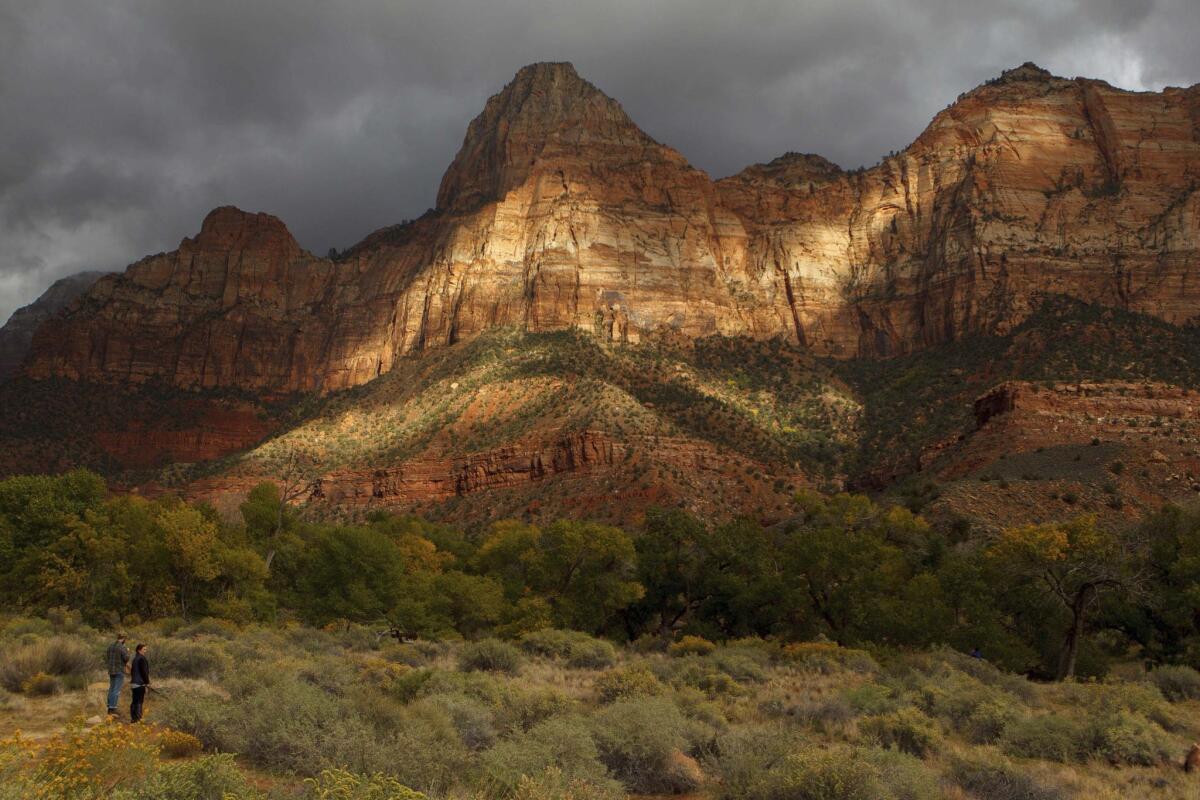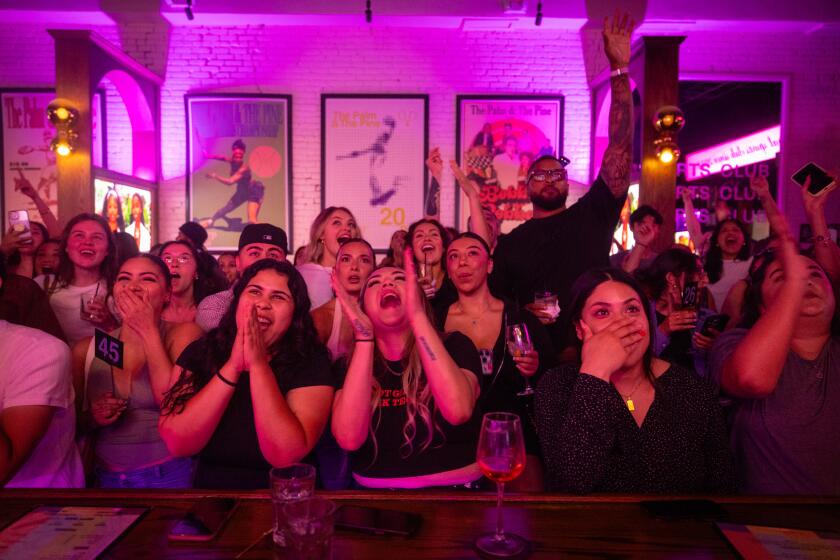How did Zion National Park become more popular than Yosemite or Yellowstone?
- Share via
Zion National Park is having a moment. In 1919, the year it was created, just 1,814 stalwart souls visited the chiseled sandstone cliffs along a 15-mile-long canyon in remote southern Utah. The park was “virtually inaccessible to visitors, since the existing roads were in poor condition and the closest trailhead a hundred miles away,” according to one historical account.
Now that’s all changed.
National Public Lands Day is billed as the biggest single-day event for volunteers to love up our public lands
The park attracts 4.3 million visitors a year, a number that jumped 60% in the last decade. In 2018, Zion ranked fourth among America’s most visited national parks, ahead of Yellowstone (fifth) and Yosemite (sixth). Only Great Smoky Mountains, the Grand Canyon and Rocky Mountain parks were more popular.
High elevations in the Eastern Sierra are starting to show color. The show continues through mid-November, if you know where to look.
As Zion marks its centennial year, its rising popularity has brought some headaches too.
“We’re not sitting here saying, ‘Don’t come to Zion,’ ” says Lyman Hafen, executive director of Zion Forever Project, a nonprofit organization that supports the park. “We’re sitting here saying: ‘We just want to be able to provide the best experience we can for you. And it may not be all that great if you’re here on a day when it’s really jammed.’ ”
Zion’s popularity rests partly on its stunning landscape, including some of the tallest sandstone cliffs in the world, and its tapering wild canyon you can hike through. It’s also only a three-hour drive from Las Vegas, which means some of the 42 million people who visit that city each year likely add on a jaunt to the national park.
Indeed, the increase in crowds has pretty much wiped out spring and fall as the less busy seasons. Now campgrounds remain crowded, parking lots packed and trails teeming with hikers well into fall.
The only quiet time is after Thanksgiving when falling temperatures cull the crowds. From December through February, visitors can drive their own vehicles along the main entry to the park, Zion Canyon Scenic Drive, which seldom sees snow.
From March through November, however, visitors are required to park and use the free hop-on, hop-off shuttles that move crowds into the ever-narrowing canyon, carved over centuries by the occasionally violent whims of the Virgin River.
At this time of year, you can expect long lines of people waiting to board the shuttles. Bicycles and wheelchairs are welcome, and fortunately, buses run every few minutes, dropping folks at nine stops along a six-mile route.
Two of Zion’s most popular destinations, Angels Landing and the Narrows, are listed as “strenuous” on the map handed out at the park’s entrance stations. But that doesn’t deter hundreds of people each hour from setting out on the 5.4-mile round-trip journey to Angels Landing, where you can catch 360-degree views from 1,500 feet above the canyon.
On a busy summer day, park rangers have had to limit access to a few hikers at a time, creating lines several hours long. The route winds through the famed Walter’s Wiggles, a series of 20 increasingly steep switchbacks, and on to the monolith’s spine, commonly known as the hogs back.
Here, hikers grip a series of steel chains to make their way along the narrow path. The crossing requires patience — it’s only wide enough for people to move in one direction, up or down, at a time — as you navigate what the park map refers to as a route with “long drop-offs.”
The Narrows, an opening in Zion Canyon accessible by wading in the Virgin River, also draws crowds out to explore.
“To be able to walk through a channel that’s maybe 16 feet wide and more than 1,000 feet straight up, that’s pretty amazing,” Hafen said. “There are days when you feel like you’re in Times Square in New York City. There are just so many people. If you’re there when several hundred other people are, it’s not as wonderful an experience as you might imagine.”
And if you’re hiking on the park’s Riverside Walk, pay attention to the warnings about severe weather. Occasional summer thunderstorms can produce isolated, heavy downpours that can cause the water to rise several feet in a matter of seconds, sometimes trapping even experienced hikers.
But back to the centennial.
Banners along the streets of Springdale, Utah, the town just south of the park’s main entrance, are the only evidence of the milestone anniversary. The park service has no celebrations planned, having partied in 2009 on the 100th anniversary of what was then called Mukuntuweap, the 1909 national monument that morphed into Zion.

In late August, Zion Forever Project, the charitable arm of the park, marked the park’s centennial in Salt Lake City with a fundraising concert pairing Sting with the Utah Symphony.
Next the group will sponsor the Centennial Celebration of the Arts Nov. 5 to 10, which brings artists to the park for what is intended as a fusion of park history and art.
The event is partly a fundraiser for a new interpretive film to be screened at Zion’s Human History Museum beginning in March. The movie, which will replace one that’s 20 years old, will promote the vital need for stewardship as the increasingly popular park enters its second century.
It describes the throngs of visitors who have discovered Zion’s charm as keepers of the land.
More to Read
Sign up for The Wild
We’ll help you find the best places to hike, bike and run, as well as the perfect silent spots for meditation and yoga.
You may occasionally receive promotional content from the Los Angeles Times.






